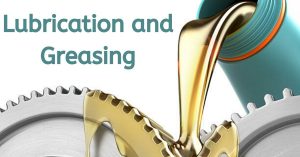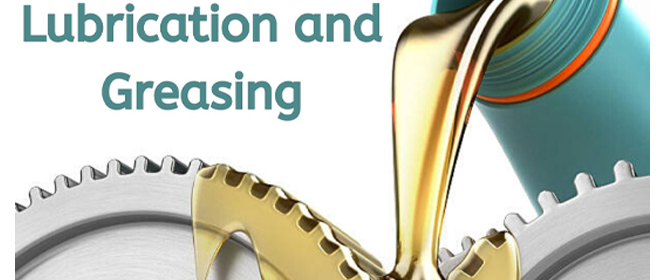Auto Draft
I am text block. Click edit button to change this text. Lorem ipsum dolor sit amet, consectetur adipiscing elit. Ut elit tellus, luctus nec ullamcorper mattis, pulvinar dapibus leo.

The most painful part of manufacturing is maintaining machines. The machine manufacturers might suggest a lot of things in the user manuals, but these recommendations are only valid under ideal conditions. However, your machinery may be operating in an entirely different environment which requires you to make your own decisions regarding how to maintain your machines and which industrial lubricant would best suit the purpose?
4 C’s of Industrial Lubrication
Industrial lubricants are available in a huge variety. But which type would suit your operating environment and provide a longer useful life to your machine is something to think about. And for this, you need to know about the 4 C’s of Industrial Lubrication:
- Correct Technology
- Correct Quantity
- Correct Frequency
- Correct Procedures
Correct Technology:
The technology of industrial lubricants basically refers to the environment in which your machinery operates. You need to know about the speed, temperature, load, vibration, moisture, and dust amount of your machinery. Temperature helps in determining the base oil of the lubricant. Speed is a determinant of the viscosity. And load, vibration, moisture, and dust, determine the additive package for the industrial lubricant.
Viscosity is the characteristic of an industrial lubricant to be resistant to flow. As the temperature and speed of the machine increases, the viscosity of the lubricant must decrease. The lubricant must be thick enough to create a layer of lubrication in order to reduce friction. Semi-solid lubricants like greases and oils made of thickeners like lithium can be a good choice for surfaces that do not have sufficient speed.
Similarly, the application environment is crucial. For instance, if the machine is to be exposed to water contact frequently, then a lubricant with low water washout and high corrosion resistance would be required. Where the equipment works under extreme pressures and low speed, a highly viscous oil-based lubricant with high load capabilities would do the job.
Correct Quantity:
Applying the correct quantity of lubrication is as important as selecting one. Over and under greasing has its own consequences. According to the American Bearing Manufacturers Association (ABMA), insufficient or over lubrication is the cause of 64% of bearing failures. It is thus necessary to know the correct quantity of lubricants, greases and oils that needs to be used every time the machine needs re-greasing.
Correct Frequency:
Like quantity, the frequency of lubrication can make a lot of difference in the performance of your bearings. You can use manual or automated re-greasing methods. However, bear in mind that too often lubrication, in incorrect quantities, with the wrong lubricants, can be a cancer for your machine.
Over greasing can increase temperatures while under greasing can increase friction unabling the machine to carry the load applied. In either case, bearing failures are bound to happen. Therefore, re-greasing intervals must be decided carefully after analyzing the operating environment. The right type of lubricant, at the right time and in the right quantity can provide constant protection to your bearings.
Correct Procedures:
After choosing the right lubricant, a process must be set-up so that proper lubrication for each equipment can be followed by all maintenance personnel. A lubrication plan must be a part of your standard maintenance procedures.
Tips to Help You Select the Perfect Industrial Lubricant
We have discussed a lot about the factors that play a role in selecting appropriate industrial greases and oils. Some more tips to help you make an informed decision are as follows:
- Functionality: Lubricants perform a lot of functions like controlling wear and tear, corrosion, friction, contamination, and temperature. Choose a lubricant after researching its functionality under different circumstances.
- Ingredients: Based on the use of the lubricant, they may have multiple ingredients apart from the base oil. The thickener used in the greases contain fibers that hold the oil in place, increasing its viscosity. Different thickeners have different effects on stability, pumpability, heat resistance, and water-resistance of the lubricant.
- Usability: Method of applying different lubricants will depend on your equipment. For example, for easy-to-reach places, aerosol lubricants may suffice. Greases may be used for accessible gearboxes. An automatic dispenser may be needed for hard-to-reach areas, while a continuous dispenser may be used for chains. Choose a lubricant based on what you want to lube.
- Cost: Cost of maintenance chemicals in Saudi Arabia can be expensive. And so, you would want to compare the cost of the lubricant you target from different vendors before making a purchase decision.
With these tips, you would be able to select the best lubricant for your machinery.





اترك تعليقاً